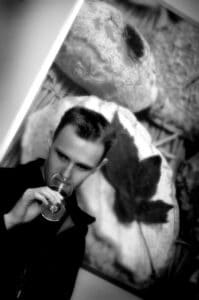The themes of beauty, fashion, and leisure relate to hedonism. This value lies at the heart of the market research studies we conduct because it is the driver of purchases. From a methodological perspective, these market studies use the full range of possible techniques. The most appropriate technique (qualitative or quantitative) must be chosen based on the project and its stage of development. You will find many detailed examples at the bottom of this page.
Contact IntoTheMinds for your studies in the beauty, fashion, or leisure sector
Our Market Research Services
- Covered territories: all European countries + United States and Canada
- Types of studies: brand awareness, satisfaction, needs and demand analysis, product testing, packaging tests
- Budget: starting from €7500 excl. VAT
- Study duration: starting from 6 weeks for quantitative studies on B2C panels
- References: Havaianas, Captain Tortue, FFVE, Life Plan Resort, …

Thomas Cabrol, founder of ProDegustation and N5 WineBar (best wine bar in the world 2017, 2018, 2019).
"We turned to IntoTheMinds to conduct a comprehensive market study on the situation of our company, ProDegustation. By analyzing in particular customer satisfaction and loyalty from various angles (marketing, finance), we were able to significantly increase our profitability, which led to the successful sale of the company to a major group. Today, we continue to work with IntoTheMinds for the analysis of our new business (N5 WineBar in Toulouse), especially for the analysis of transaction data allowing the modeling of customer behaviors. We highly recommend this partner for the execution of marketing studies."
Use Cases of a Study in the Beauty, Fashion, or Leisure Sector
Like all market research studies, but perhaps even more so, those carried out in the fashion, beauty, and leisure sectors primarily aim to quantify demand. These studies mostly concern consumer goods. However, our 20 years of experience in the field also allow us to identify other needs in the sector:
- Market demand quantification: this type of study, as the name suggests, is conducted using quantitative methods (preferably CAWI to control costs). The goal is to estimate demand before launching a new product on the market.
- Brand awareness study: this is a type of study we conduct very frequently. The brand awareness study helps understand precisely the position of a brand in a market and its market share.
- Needs and usage analysis: this type of study is more exploratory in nature. An ad hoc methodology must therefore be used (preferably qualitative).
- Distribution network study: regardless of the maturity level of your business, the distribution network is one of the keys to success. It is therefore essential to constantly monitor it.
Key Considerations
The selection of respondents is very important, and thorough screening must be conducted to survey only the target customers. Even for a brand awareness study, which may seem broad by nature, we work with clients ahead of time to determine the segments to be surveyed. If your marketing strategy is, for example, focused on women, your sample must absolutely reflect this, or the results will be invalid.
Budget
B2C studies start at €6500 for brand awareness measurement.
Request a quote for your study
Examples of Studies Conducted for the Beauty, Fashion, or Leisure Sector
- This Brazilian brand became globally renowned thanks to its beach sandals. We had the pleasure of conducting one of the first brand awareness studies in the European market. On this occasion, we also analyzed consumers’ purchasing habits and their knowledge of the correct spelling of the brand name.
- We conducted a comprehensive market study for the launch of this cosmetics brand present in three countries (Spain, France, Belgium). Consumer expectations were addressed through a qualitative study followed by a quantitative one. Distribution through pharmacies was also the subject of a specific analysis. Once the cosmetics were formulated and developed, we focused on the packaging and analyzed consumer preferences using a CAWI approach.
- The Rusée project (an anagram of “Re-Use”) aimed to repurpose animal leather scraps into luxurious leather goods. This was therefore an upcycling initiative. Profiling studies based on social media data were conducted, and Design Thinking workshops were organized to develop the products. The collection was launched as a series of highly original bags distributed in Belgium.
- The online antiques sales platform commissioned us to conduct a competitive and brand awareness study, as well as an analysis of its distribution network. Antikeo is a matchmaking platform connecting end buyers with resellers (antique dealers). Growing market share therefore requires satisfying both parties. Without buyers, resellers will not be interested; without resellers, the platform will not offer enough items, and end buyers will not find what they are looking for.
- Vintage vehicles (Oldtimers) are a passion shared by thousands of enthusiasts. The FFVE brings together over 100,000 of them in France. We had the complex task of organizing a CAWI survey involving more than 100,000 people in France to understand their habits and needs. Over 20,000 user responses were collected, in addition to those from clubs and professionals. This study is the largest ever conducted in France on vintage vehicle users.
- FRS Ferry is a maritime company connecting Spain and Morocco. We were commissioned to carry out a survey among Maghrebis living in France and Belgium to assess the potential of a new offer.
- Life Plan Resort offers residences in the northeast of Lisbon with comprehensive services to support healthy ageing. Its luxury positioning makes it a preferred choice for affluent European retirees. Before launching the marketing strategy, we were commissioned to assess demand among high-income retirees in five countries (Netherlands, Germany, United Kingdom, France, and Italy). We then followed up with a qualitative study of the future distribution network.

